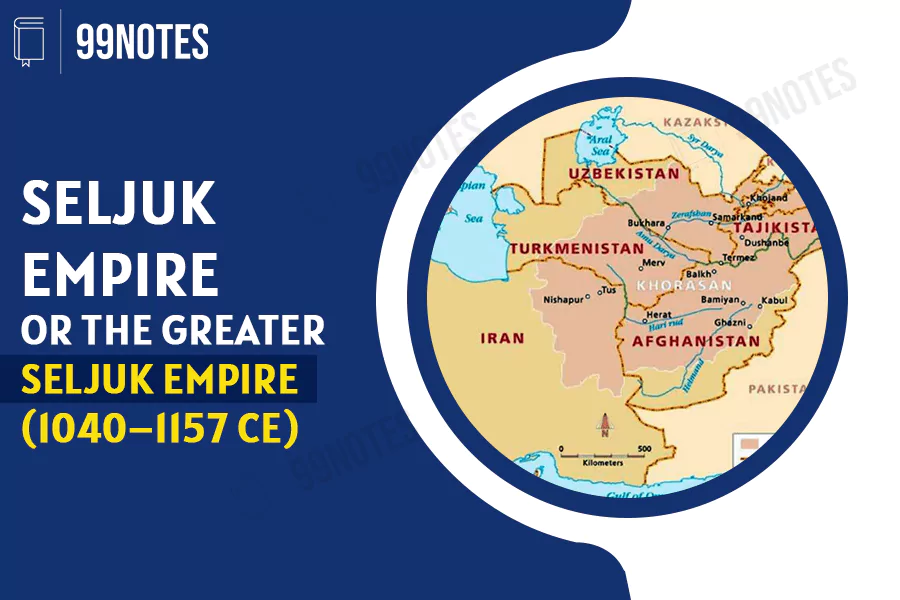Seljuk Empire or the Greater Seljuk Empire (1040–1157 CE)
Seljuk Empire or the Greater Seljuk Empire (1040–1157 CE)
-
Seljuks were a Turkic tribe that gained control over Syria, Iran and Trans-Oxiana, after the death of Mahmud of Ghazni in 1041 CE.
-
The Seljuks were descendants of a tribal chief named Seljuk, originally from trans-Oxus near the Aral Sea.
-
The Greater Seljuk Empire was founded in Nishapur, Iran, around 1038 CE, when the Seljuk descendant arrived in the region.

-
They were a contender against the Ghaznavids for control of the Khorasan, which included north-eastern Iran, southern Turkmenistan, and northern Afghanistan. At its peak, Seljuks controlled an area from Palestine on the easter coast of the Mediterranean to Kashgar in western China. Seljuks restricted the Ghaznavids to Ghazni and Punjab and blunted the dangers he posed to India.
-
The Seljuks Empire was a loose confederacy. Such a vast expanse indispensabl involved a great deal of diversity of religion, ethnicity, and language, but it was held together by trade, commerce, and communication over the Silk Route.
-
Seljuks declined due to internal strife between Sultan Malik Shah and his vizier Nizam-ul-Mulk.
-
The decline of Seljuks created a vacuum, which was filled by:
-
The Khwarizmi empire based in Iran, and
-
The Ghurid empire based in Ghur in northwestern Afghanistan.
-
-







